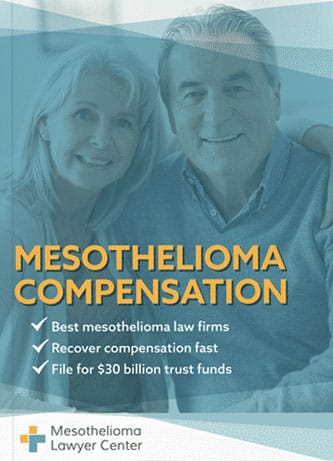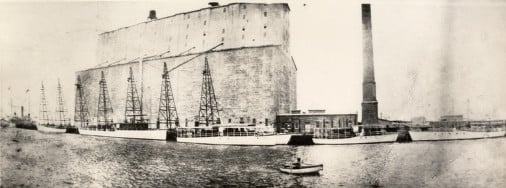Owned and operated by the Houston Port Authority, Barbours Cut Terminal has a long history of amianto use. The heavy use of asbestos at the original Barbours Cut Container Terminal exposed many workers and put them at risk for mesotelioma and other asbestos illnesses.
Si a usted o a un ser querido le diagnosticaron mesotelioma, cáncer de pulmón relacionado con el asbesto o asbestosis, usted podría tener derecho a una compensación sustancial. Complete nuestro formulario para recibir nuestro Paquete de Compensación Financiera gratuito. Nuestro paquete contiene información completa sobre abogados con experiencia en mesotelioma en su zona, cómo presentar una reclamación para fondos fiduciarios de asbesto, cómo recibir su compensación en 90 días y más.


Paquete de compensación financiera GRATUITO
- Información sobre despachos de abogados que recuperarán su INDEMNIZACIÓN MÁS ALTA
- Aprenda cómo cobrar en 90 días
- Solicite su parte de $30 mil millones en fondos fiduciarios

Did Barbours Cut Terminal Use Asbestos?
Yes, like many shipyards and ports, the Barbours Cut Container Terminal used asbestos and put workers at risk of exposure. The terminal wasn’t built until the 1970s, at the end of peak asbestos use in shipping.
While Barbours Cut isn’t that new, it is a part of the older and more extensive Port Houston. Ports, terminals, and shipyards used asbestos in several ways, but primarily because of its ability to insulate and protect against fire.
Barbours Cut Terminal History
Barbours Cut Terminal opened in 1977, which provided a better alternative to the already-established Turning Basin terminal. It is owned by Port Houston.
Turning Basin was more than six hours away from the Gulf of Mexico. Barbours Cut Terminal cut the time in half by being placed only three hours away from the Gulf.
Over time, the terminal expanded to over 250 acres. It also opened a cruise ship terminal, which was used until 2007. Today, Barbours Cut still operates and has undergone several modernizations.
How Was Asbestos Used at Barbours Cut Terminal?
In 2008, a report released by the Environmental Protection Agency (EPA) indicated that Barbours Cut Terminal contained large amounts of asbestos.
Shipyards and terminals use asbestos mostly as an insulating material. It went into buildings to insulate pipes, furnaces, and boilers. It filled the same role on ships. Vehicles, equipment, and machinery used in ports and terminals contained asbestos in friction components like brakes and clutches.
Barbours Cut Terminal Removes Building Containing Asbestos
A 2003 inspection report carried out by the Houston Port Authority Commissioner showed that the terminal’s administration building was littered with asbestos. It was subsequently demolished and removed.
The removal, estimated to cost over $30,000, was handled by the Port Authority.
How Did Asbestos at Barbours Cut Harm Workers and Residents?
The use of asbestos at the terminal put workers at risk for asbestos-related diseases. Working with or near asbestos can lead to exposure through the inhalation of fibers.
In some people, inhaled asbestos fibers caused enough damage to lead to later diagnosis of mesotelioma, cáncer de pulmón, asbestosis, or other illnesses.
Many people in the La Porte and Houston areas developed leukemia, according to a 2007 University of Texas study. The terminal used various hazardous chemicals. Children within a two-mile radius of the terminal are twice as likely to develop leukemia.
Asbestos Lawsuits Related to Barbours Cut
Although there are currently no records of workers filing asbestos-related lawsuits against Barbours Cut Terminal, many who worked at other shipyards owned by the Houston Port Authority filed claims against asbestos manufacturers that supplied asbestos-containing materials to shipyards.
You could qualify for compensation if you worked at Barbours Cut and now have an asbestos illness. Contact a mesothelioma lawyer to find out how to file an asbestos lawsuit or claim compensation through an fondo fiduciario para el amianto.
Additional Help and Resources for Asbestos Victims
Keep in mind that you may qualify for significant compensation if you or a loved one have been diagnosed with mesotelioma, cáncer de pulmón relacionado con el asbesto o asbestosis. Don’t forget to fill out our form to get our free Paquete de compensación financiera, lleno de información sobre los abogados con experiencia en asbesto y mesotelioma en tu zona.

Pablo Danziger
Revisor y editorPaul Danziger creció en Houston, Texas, y se licenció en Derecho en la Facultad de Derecho de la Universidad Northwestern en Chicago. Durante más de 25 años, se ha dedicado a representar a víctimas de mesotelioma y a otras personas afectadas por la exposición al asbesto. Paul y su bufete han representado a miles de personas diagnosticadas con mesotelioma, asbestosis y cáncer de pulmón, obteniendo indemnizaciones significativas para los clientes lesionados. Cada cliente es fundamental para Paul y atenderá todas las llamadas de quienes deseen hablar con él. Paul y su bufete se encargan de casos de mesotelioma en todo Estados Unidos.
Conéctese con el abogado especializado en mesotelioma Paul Danziger
Referencias
- Clapp, R.W., Jacobs, M.M., and Loechler, E.L. (2008). Environmental and Occupational Causes of Cancer New Evidence, 2005–2007. Rev. Environ. Health. 23(1), 1-37.
Recuperado de: https://www.ncbi.nlm.nih.gov/pmc/articles/PMC2791455/ - Environmental Working Group. (2015, March 10). Lethal and Still Legal: Asbestos Flows into U.S. Ports
Recuperado de: http://www.asbestosnation.org/lethal-and-still-legal-asbestos-flows-into-u-s-ports/ - Bailey, D., Plenys, T., Solomon, G.M., Campbell, T.R., Feuer, G.R., Masters, J., and Tonkonogy, B. (2004, March). Harboring Pollution. The Dirty Truth About U.S. Ports. NRDC.
Recuperado de: https://web.archive.org/web/20110608090424/http://www.nrdc.org/air/pollution/ports/ports.pdf
